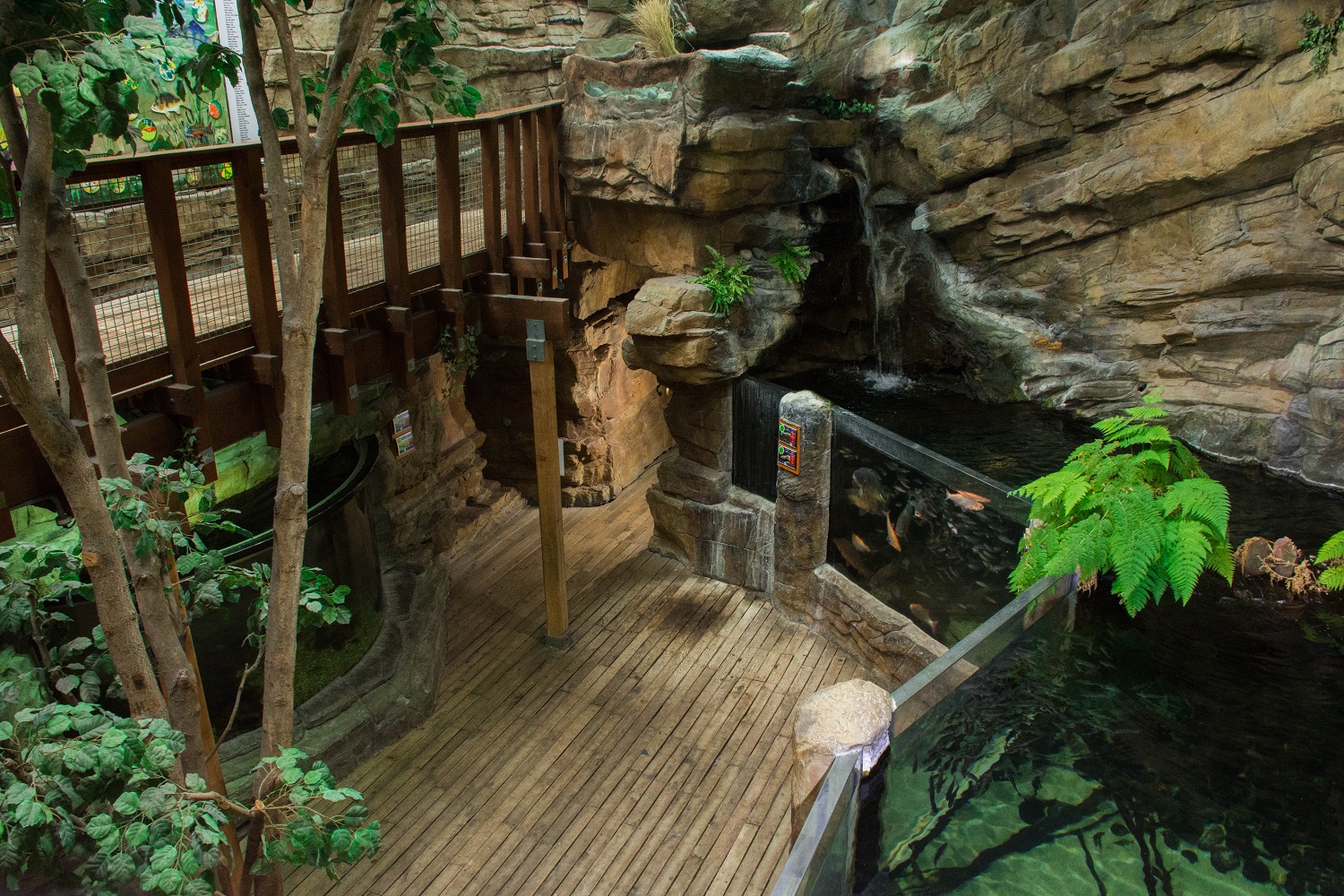
With its long nose and distinctive dorsal scutes, the Siberian sturgeon (Acipenser baerii) is one of the most impressive members of the Northern Streams exhibit here at Blue Planet.
At home amid the wilds of northern Russia, the Siberian sturgeon is a mid-sized member of the Acipenseridae family – a group of fish that have swum our rivers for over 140 million years.
Growing to an average of 2m in length, these long-lived sturgeons have a lifespan of around 60 years, so it’s very likely that the specimens you meet at Blue Planet are older than you!
Learn more about the incredible Siberian sturgeon right here.
Siberian sturgeon features and characteristics
Keen to learn how to spot the Siberian sturgeon in Northern Streams? Well, for starters, they’re long and slender in build, with an elongated snout, pointed fins and unique dorsal scutes covering their bodies.
Another thing to note about the Siberian sturgeon is that the species is surprisingly colourful. Their scales range from grey to brown across the top of their bodies, while their underbellies are white and yellow. This helps them to stay camouflaged from predators and prey in any direction.
In the wild, Siberian sturgeon can grow beyond the two-metre mark, but generally stop at around 1.5m in captivity. Their growth is fully dependent on their diet and environment, with adolescent Acipenser baerii growing rapidly in the right conditions.
One feature that has come to define the Siberian sturgeon is its “scutes” – a horn-like bone similar to those found on turtles and tortoises. Fully grown animals can be covered in nearly 200 of these bony plates, which grow beneath the skin from the tip of the snout to the point of the tail fin.
Where do Siberian sturgeon live?
Siberian sturgeon have a non-migratory population in all river systems off the coast of Siberia and across Asia. They’re Potamodromous, which means that they’re exclusively freshwater species. Their young are spawned in main river channels over stone and gravel areas and are often found dwelling where the current is strongest.
Acipenser baerii have been found in virtually every river and watercourse in Siberia, from the River Ob in the west to Lake Baikal in the south. They move upstream from the seas of Laptev, Barents and Kara, meaning they’re perfectly adapted to marine and freshwater environments.
They migrate in the winter to source better oxygenated water, and swim upstream each year, sometimes thousands of kilometres to spawn, where they’ll choose rocks and gravel amongst a fast-moving stream to release their eggs.
Sadly, due to damning, river pollution and habitat loss, Siberian sturgeon numbers are in decline throughout much of Russia. The IUCN recently added the animal to its ‘Critically Endangered’ list, with a very real chance of the fish being lost from Siberia’s rivers, lakes and seas for good.
What do Siberian sturgeons eat?
Despite their size, Siberian sturgeons live on relatively small and immobile prey, including crustaceans, worms and insect larvae. Interestingly, they do not have very good eyesight, relying on other senses as they search the bottom of the streams and rivers for food.
Where can you discover Siberian sturgeons?
Siberian sturgeon are on display within the Northern Streams exhibit here at Blue Planet Aquarium. This is the place to learn more about the habitat and biodiversity of some of the world’s coldest freshwater rivers and streams, with other creatures on display including the common carp and European perch.
Fun facts about Siberian sturgeons
Impress your pals and get to know the Siberian sturgeon a little better with our pick of three incredible facts about these beautiful river dwellers.
- The heaviest ever recorded Siberian Sturgeon was 210kg – that’s more than the average weight of two grown men!
- The Siberian sturgeon is one of most the valuable fish on Earth, and that’s all thanks to the It’s for this reason that Siberian sturgeon are critically endangered
- 80% of all Siberian sturgeon reside in the River Ob, the seventh-longest river system in the world.
Ready to get up close and personal to the spectacular Siberian sturgeon? Purchase your tickets to Blue Planet Aquarium today!
Type
Fish
What do they eat?
Crustaceans, worms and insect larvae
Size
2m
Water Type
Fresh Water
Where are we?
Russia
